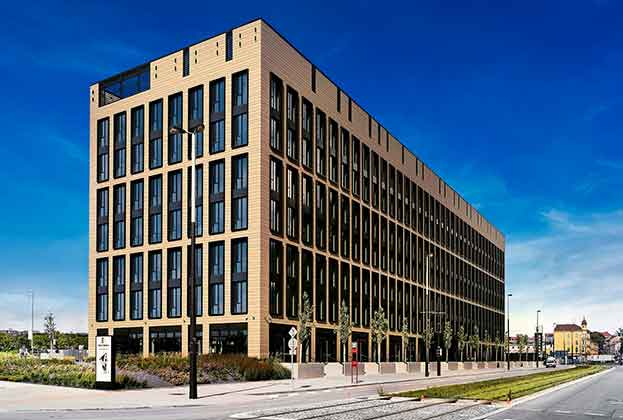With such low vacancy rates, why are we not seeing more speculative development?
Record low vacancy rates across Europe’s CBDs and persistent demand for good quality space have applied high levels of rental growth across Europe’s core CBDs in recent years. Though, this has raised question marks over the future sustainability of upward rental pressure. The chart below shows that on average European CBD office rents have risen by 5.3% per annum over the past six years in the core markets.
However, 2020 rental growth forecasts are expected to be outstripped by rising input costs, which would squeeze developer margins. Eurostat figures indicate that EU28 overall construction costs rose by 2.6% for the year to Q2 2019 and are on an upward trajectory, whereas our 2020 forecast for average CBD rental growth has eased to 2%.
One key reason for rising input costs is labour availability in core cities, and thus, labour mobility across Europe. According to Eurostat, hourly labour costs in the construction sector in Poland cost €9.60 per hour, against €28.80 per hour in Germany and €36.80 per hour in the Netherlands. Despite almost four times higher wages on offer in Western Europe (albeit, higher living costs associated with this), construction workers are generally unwilling to migrate westwards for higher wages. Savills Programme and Cost Sentiment Survey (SPECS) reports that in the event of a 'no deal' Brexit, it is likely that average rents for office space in central London will fall slightly in 2020 before rebounding in 2021. In such an event developers may choose to limit the development pipeline, but with already low vacancy rates this would ultimately cause rents to rise further due to constrained supply.
Material cost growth has also been a large contributor to cautiousness on development. Although steel prices have dropped 9.5% during 2019 according to Trading Economics, prices reached a record high in October 2018. Developers are generally hesitant at paying higher rates for a) fixed material cost contracts, and b) fixed exchange rates when importing materials costs. As a result, developers are factoring in higher contingency costs in order to maintain a 15–20% profit margin.
In order for developers to secure funding from lenders, lenders are generally looking for a minimum of around 50–60% of the development scheme to have been pre-let, to moderate leasing risk. We generally expect developers to continue funding for pre-let schemes in core cities, as the low vacancy rates force occupiers to either re-gear or sign for new space. For example, of the new space set to be delivered in 2020, Berlin is 67% pre-let, Frankfurt 65%, Munich 60%, Oslo 64% and Luxembourg 82%. In London City, only 31% of new space in 2020 is pre-let, though as the land value accounts for a higher proportion of gross development cost and is often funded by developers, banks are willing to finance the deal.
Read the articles within European Offices Outlook below.
.jpg)




